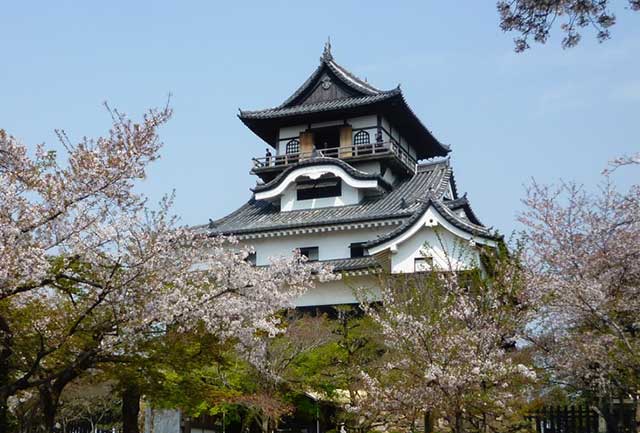
In 1440, Japan was in the Muromachi Period, the early phase of the violent Sengoku, or Warring States period, marked by frequent localized wars. To control territories, many castles were built. One local warrior capitalized on the strategically situated 85-meter-high Inuyama Hill, surrounded by the natural moat of the Kiso River, offering clear views of the Nobi Plain and the ancient lands of Owari (Western Aichi) and Mino (Gifu).
Almost a century later, in 1537, Oda Nobuyasu, grandfather of the great Oda Nobunaga, took the hill and fortress, also known as Hakutei Castle. Recognizing its strategic importance, the Oda clan constructed a larger, sturdier, and more elegant castle. This became the first castle owned outright by Oda Nobunaga, although he left his uncle as a caretaker while he engaged in further battles.
Inuyama Castle, classified as a Hirayama-jiro, is the oldest of Japan's 12 remaining original castles. Located in Aichi Prefecture, it may seem small compared to others like Nagoya or Osaka castles. Its stone walls stand just five meters high, with the tower itself a mere 19 meters on top of that. The total floor space of the defensive tower structure is around 699 square meters, comparable to Hikone Castle, which is quite large for its time.
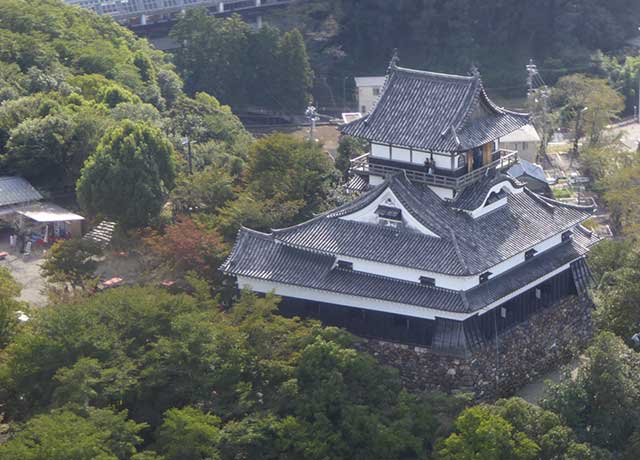
Today, only the keep, the main watchtower, remains. The lord's living quarters once occupied the wide flat area along the lower slopes of the mountain, which was fortified with turrets, barracks, walled corridors, and related buildings. Inuyama had nine yagura watchtowers around its perimeter and two main gates, with six smaller gates protecting the Honmaru.
Unlike most castles that name their precincts Honmaru, Ni-no-Maru, San-no-Maru, etc., Inuyama Castle's five baileys were named after trees, with the Honmaru at the top, and the lower slopes consisting of the Sumi, Momi, Kiri, and Matsu kuruwa.
The castle's architectural beauty is evident both inside and out. The tower is a four-story Borogata-type keep, with entry via the smallest anakura (basement) of all the castles in Japan. Steep stairs, built to save space and hinder armored invaders, lead to the spacious first floor.
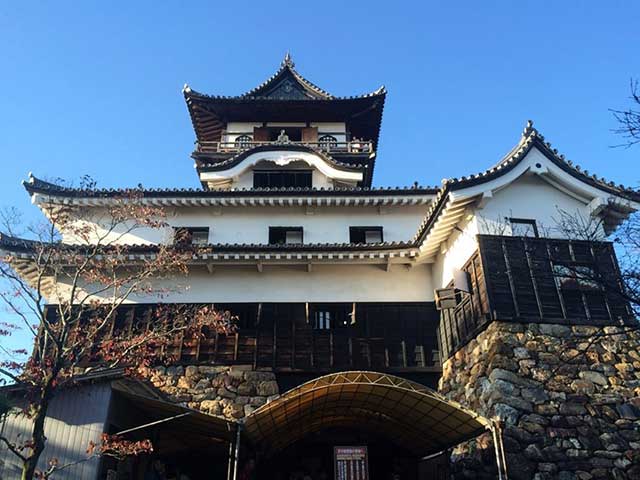
The keep appears to be square, yet the northeastern corner features the widest open angle of any keep in Japan, providing better views and increased firing range along the eastern flank. The first floor is divided into several rooms, including the Jodan-no-Ma, the lord's official audience chamber, which is rare to find in a tower keep. This room features hidden doors in the wall, behind which the lord's bodyguards or a private retreat could be found.
Wide corridors called Musha-Bashiri (warrior running corridors) around these central rooms allowed defenders ample space to move during an attack. The first-floor Musha-Bashiri has six places where sliding doors once stood, reflecting an old style seen in Oda Nobunaga's Azuchi and Toyotomi Hideyoshi's Osaka Castles. However, these doors would hinder warriors' movements, preventing them from running around the central area.
Climbing to the second floor, you find the armory where weapons and armor were stored. The third story features wide outer corridors for warriors, especially archers, to move freely. Above that, small balconies under triangular eaves (hafu) provide fine views of the river and mountains and serve as firing positions. The fourth floor is a wide chamber with a low balcony offering spectacular views of the surrounding area.
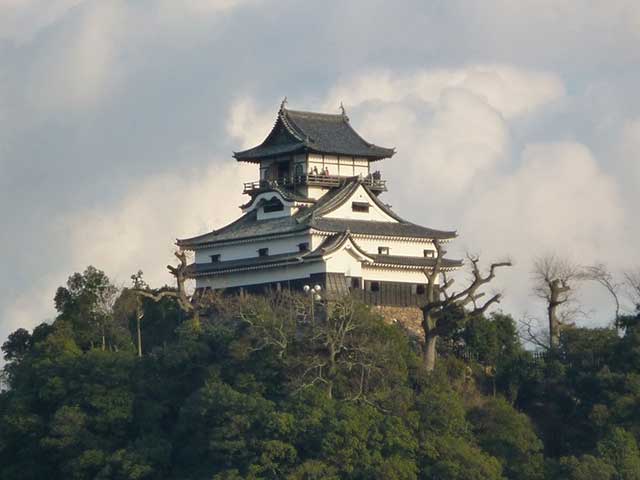
The mid-section karahafu decorative curved roofing element and extended yagura watchtower were added during the Naruse years.
Inuyama Castle saw significant action, notably during the Battle of Komaki-Nagakute in 1584 when Toyotomi Hideyoshi used it as a base against Tokugawa Ieyasu. In 1600, it was threatened during the Battle of Sekigahara. The night before the battle, daimyo Takenaka Shigekado defected to the Eastern forces, and Ishikawa Sadakiyo, the lord of Inuyama, made a secret deal with the Eastern forces, securing the castle's future.
After a succession of lords, Naruse Masanori took control in 1617, and the castle remained in the Naruse family for generations. In 1871, after the feudal system ended, many of the castle's outer walls and buildings were destroyed. The main keep survived but was damaged in the 1890 Great Nobi Earthquake. The former Lord Naruse undertook repairs, and in 1935, Inuyama Castle was designated a National Treasure. It remained in the Naruse family's care until 2004 when it was handed over to Inuyama City and a new overseeing foundation.
Inuyama Castle is a fine example of 16th-century castle architecture and a treasured symbol of Inuyama City.
See also
-
Aizu-Wakamatsu Castle
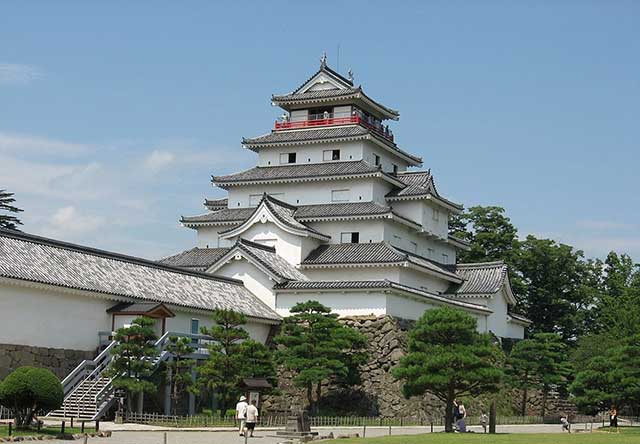
Aizu-Wakamatsu is the most powerful and at the same time the oldest castle in the Tōhoku region in the north of Honshu Island. Its history begins in the 14th century and is closely connected with the Ashina clan, whose members claimed descent from the legendary Taira family.
-
Maruoka Castle
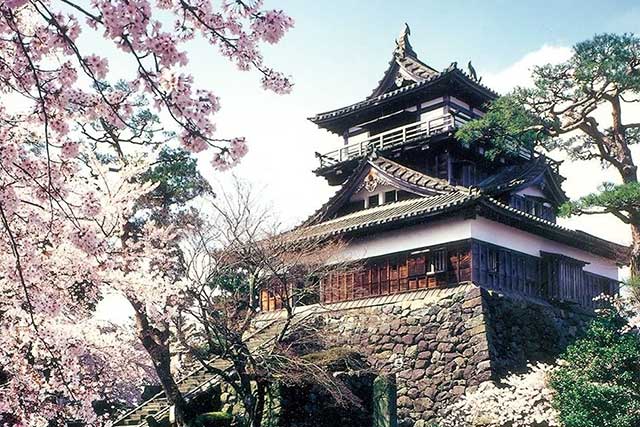
Maruoka Castle is located in the central part of the former city of Maruoka, which is now part of the city of Sakai. This area lies in the northeastern part of Fukui Prefecture. The castle was built on the bank of the Kuzuryu River, on the side opposite Fukui City, which once served as the administrative center of the former Echizen Province. Thanks to its location, Maruoka held significant strategic importance, as it controlled two major routes at once: the Hokurikudo highway leading from Kaga Province and the Mino Kaido road connecting these lands with Mino Province.
-
Marugame Castle
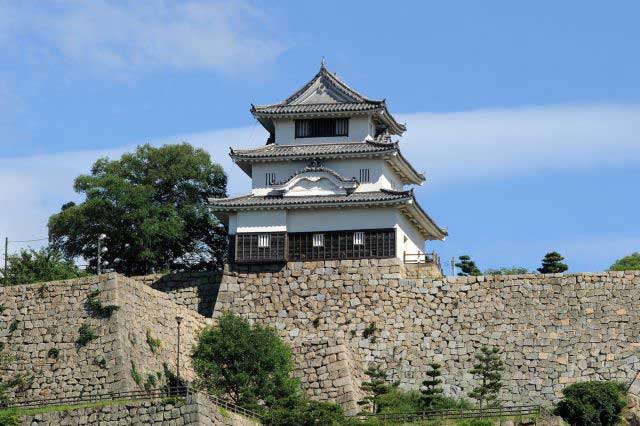
Marugame is part of the so-called “Authentic Dozen,” a group of twelve castles whose donjons have survived to the present day without major reconstructions since the Edo period.
-
Iyo Matsuyama Castle
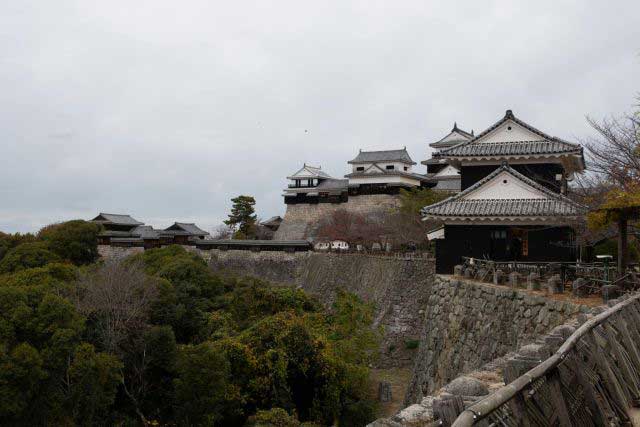
Historically, the center of Iyo Province—corresponding to today’s Ehime Prefecture on the island of Shikoku—was the city of Imabari, while the Matsuyama area was regarded as an agricultural hinterland with broad plains and low hills. During the Muromachi period, the central part of the province was governed by the Kano clan from Yuzuki Castle. With the onset of the Sengoku period, however, this clan lost its former influence and was forced to survive in the shadow of the more powerful Mori and Chōsokabe clans. After Toyotomi Hideyoshi’s forces conquered Shikoku in 1587, the northern part of Iyo Province was granted to Fukushima Masanori, one of the so-called “Seven Spears of Shizugatake.” In 1595, Masanori was transferred to Kiyosu Castle, and the lands around Matsuyama were given to another of the Seven Spears, Katō Yoshiaki, who received Masaki Castle and an income of 60,000 koku of rice.
-
Kanazawa Castle
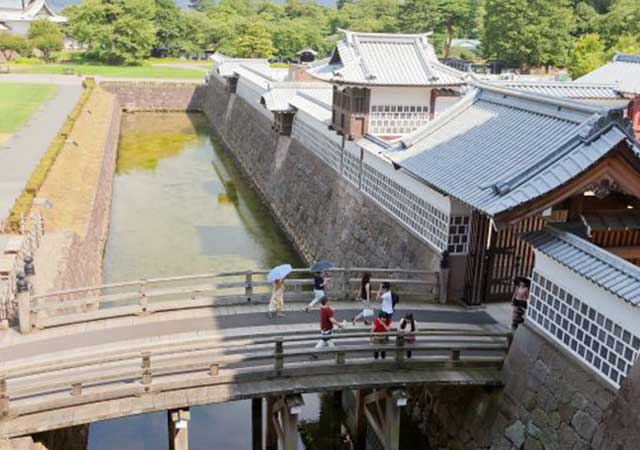
Construction of Kanazawa Castle began in 1580 on the orders of Sakuma Morimasa, a vassal of Oda Nobunaga. The castle was built on the site of the Ikko-ikki sect's Oyama Gobo temple, which is why it is sometimes called Oyama Castle. Morimasa managed to build several moats and begin construction of a castle town. However, after his defeat at the Battle of Shizugatake in 1583, he was executed, and ownership of the castle passed to Maeda Toshiie (1538–1599).
-
Nakatsu Castle

Kuroda Yoshitaka (1546–1604) was one of the closest advisors to the legendary military commander Toyotomi Hideyoshi. He took part in key military campaigns of the late 16th century, including the campaign against Shikoku in 1585 and the campaign against Kyushu in 1587. Later, during the second campaign in Korea, Yoshitaka served as chief advisor to the commander of the invasion forces, Kobayakawa Hideaki. After Hideyoshi's death, he swore allegiance to Tokugawa Ieyasu, thereby securing his influence and patronage under Japan's new leader.
-
Edo Castle
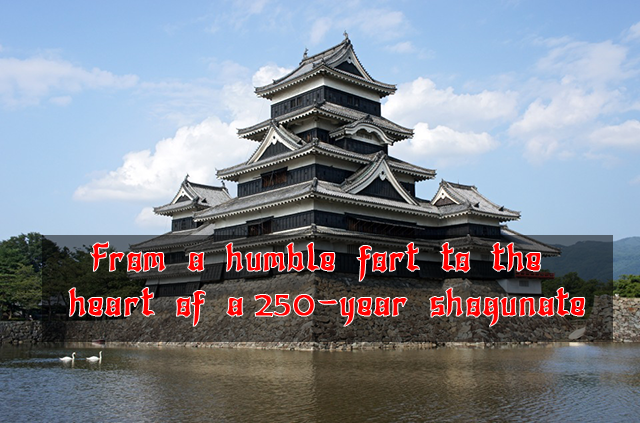
The history of Edo Castle dates back to the Heian period, when the Edo clan built a small fort on this site. In 1457, the vassal of the Uesugi clan, Ota Dokan (1432–1486), constructed a full-scale castle here. Internal conflicts weakened the Uesugi clan, and in 1524, Ota Dokan’s grandson, Ota Yasutaka, surrendered the castle without resistance to the forces of Hojo Soun, the ambitious leader of the Hojo clan. While Odawara Castle remained the clan's main stronghold, Edo was considered a key strategic fortress.
-
Samurai Museum Shinjuku

Situated in the vibrant district of Shinjuku, the museum showcases an extensive collection of samurai armor, weapons, and cultural artifacts spanning from the Kamakura to the Edo period. The exhibits aim to convey the samurai's unwavering commitment to honor and discipline, reflecting how their spirit continues to influence modern Japanese culture.

